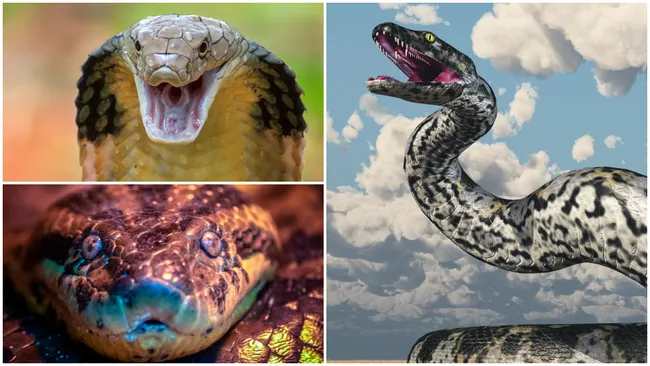From the Titanoboa and Vasuki, prehistoric serpents as lengthy as a Tyrannosaurus rex, to contemporary pythons and boa constrictors capable of engulfing humans whole, Earth’s history is rich with the legacy of colossal snakes. With intricately patterned bodies and predatory strikes rivaling the velocity of fighter jets, snakes stand out as one of nature’s most captivating reptilian wonders. Among their ranks, a select few command attention for their sheer size and weight, presenting a formidable presence across the globe, from the dense jungles of southeast Asia to the sprawling plains of South America and even the marshlands of the United States.
Yet, quantifying the dimensions of these magnificent creatures proves challenging, especially when delving into the annals of antiquity. Historic accounts often lack the precision required for accurate assessment, and the elasticity of snake skins further complicates matters, as stretching may obscure their true proportions. Despite these hurdles, Patrick Campbell, senior curator of the reptiles collection at the esteemed Natural History Museum in London, notes the existence of authenticated records documenting the existence of giant snakes worldwide.
Below, we embark on a journey through time, descending into the depths of serpentian enormity. Here lies a curated collection of Earth’s mightiest serpents, ranging from the relatively diminutive among the serpent giants to the colossal behemoths that once ruled the ancient landscapes—a lineage culminating in the awe-inspiring proportions akin to those of a Tyrannosaurus rex.
11. Central African rock python (up to 16.5 feet)
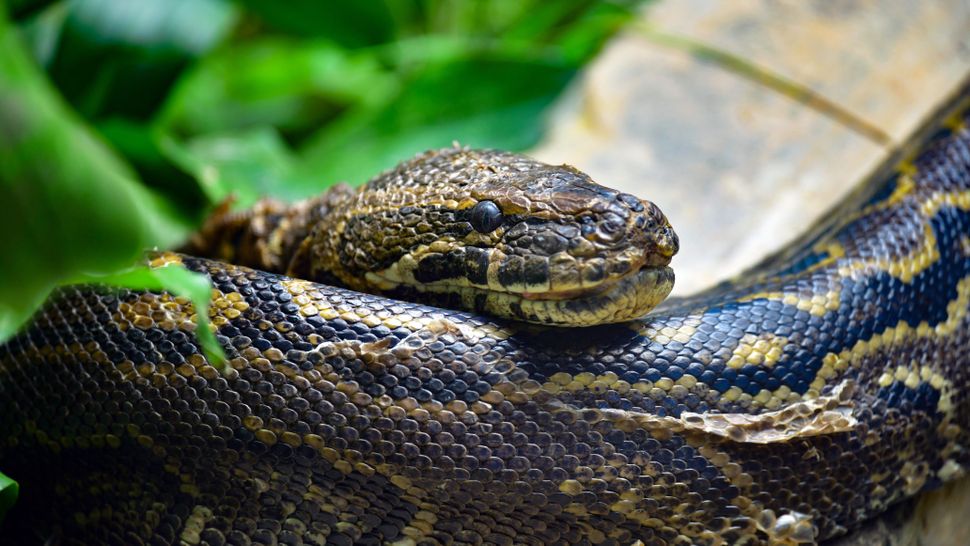
Central African rock pythons (Python sebae) rank among Africa’s formidable snake species, showcasing impressive lengths of up to 16.5 feet.
According to the Oregon Zoo, the Central African Rock Python (Python sebae) holds the title of Africa’s largest snake. Renowned for its adaptability, this formidable serpent thrives across the diverse landscapes of sub-Saharan Africa, seamlessly transitioning between savannahs, forests, and deserts. With lengths averaging between 9.8 to 16.5 feet (3 to 5 meters), as reported by the Animal Diversity Web (ADW), these pythons exemplify nature’s capacity for both power and versatility.
Much like their Burmese counterparts, Central African Rock Pythons exhibit a voracious appetite, capable of consuming formidable prey such as antelope and even crocodiles. In rare instances, these apex predators have been known to target humans, with documented accounts of attacks and partial consumption. This feat is made possible by their remarkable anatomical adaptation—an extraordinary flexibility in their jaws that allows for the ingestion of prey much larger than their own head size. As Patrick Campbell elucidates, “Because they’re able to disassociate the upper and lower jaws when about to devour prey, they can often take in things which are much larger than their head sizes.”
10. King cobra (18.7 feet)

Standing tall, its hood flared and venomous fangs bared, the king cobra (Ophiophagus hannah) casts an imposing silhouette—not merely due to its lethal bite, capable of felling an elephant. Originating from the lands of Asia, these majestic serpents can attain lengths exceeding 16 feet (5 meters), as documented by the Smithsonian’s National Zoo and Conservation Biology Institute. The annals of record-keeping recount the tale of the longest king cobra ever documented, a captive specimen measuring a staggering 18.7 feet (5.71 meters) at London Zoo in the late 1930s, as enshrined in the annals of the Guinness World Records—a length nearly equivalent to that of a standard shipping container.
Conventionally, venomous snakes do not attain colossal proportions. Their adeptness at incapacitating prey with a solitary bite obviates the necessity for reliance on sheer size or strength for sustenance, as elucidated by Patrick Campbell. Nonetheless, king cobras defy this norm, emerging as a notable exception. Their exceptional length earns them the esteemed title of the longest venomous snake on our planet, a testament to their formidable presence amidst the intricate tapestry of Earth’s biodiversity.
9. Burmese python (18.8 feet)
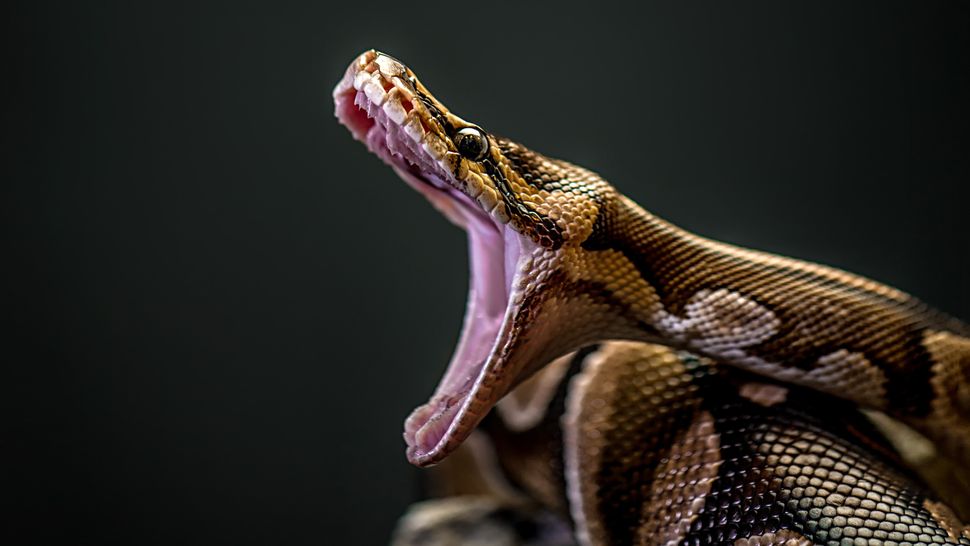
Burmese pythons (Python bivittatus) represent a distinguished member among the extensive roster of 41 python species found worldwide. Originating from the lush environs of Southeast Asia, these serpents embark on their journey aloft in the canopy, transitioning to ground-dwelling as adults due to their imposing size. Among the pantheon of these remarkable creatures, “Baby,” a captive Burmese python, etched her name in history with a remarkable length of 18.8 feet (5.74 meters), as documented by Guinness World Records. In their natural habitat, these formidable predators routinely exceed lengths of 16 feet (4.9 meters), a testament to their prowess in hunting even the formidable alligator.
The intrusion of Burmese pythons into the delicate ecosystems of Florida has raised both eyebrows and concerns. In 2022, headlines were ablaze with the discovery of the largest Burmese python ever encountered in the Sunshine State—a behemoth weighing a staggering 215 pounds (97.5 kilograms) and measuring an impressive 17.7 feet (5.4 meters) in length.
Adding to their allure, researchers investigating Burmese pythons in the Florida Everglades, where these serpents have proliferated after being released as pets, uncovered a fascinating revelation. Despite their invasive status, these serpents exhibit an astonishing homing instinct, capable of navigating back to their original habitats over distances exceeding 20 miles. This remarkable feat, unveiled in a 2014 study published in the journal Biology Letters, underscores the adaptability and resilience of these captivating creatures amidst the ever-changing landscape of their adopted home.
8. Cuban boa (up to 19.6 feet)
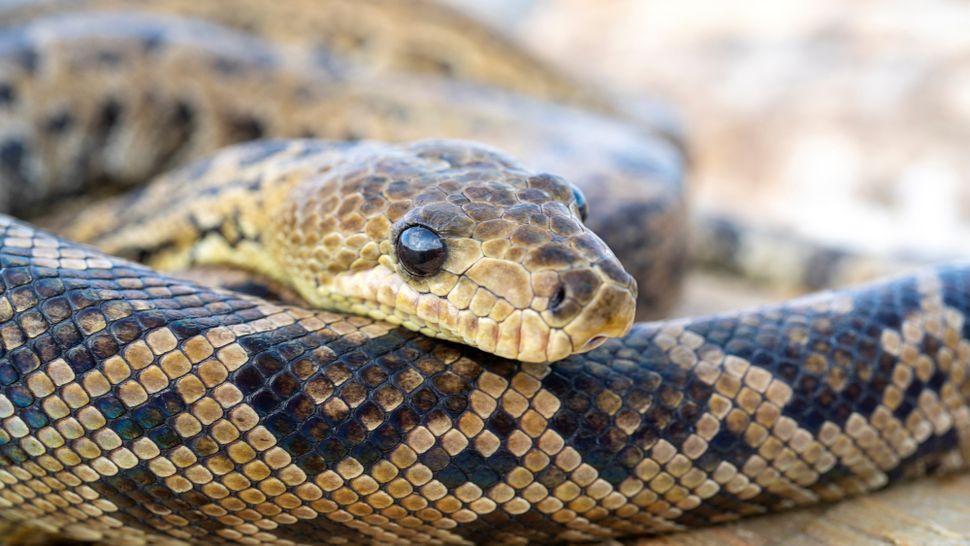
Endemic to the vibrant landscapes of Cuba, the Cuban boas (Chilabothrus angulifer) emerge as the undisputed titans of the Caribbean serpent realm, as affirmed by the Lake District Wildlife Park. With iridescent scales adorning their formidable frames, these majestic creatures command attention with their imposing dimensions. Weighing in excess of 66 pounds (30 kilograms) and stretching to lengths of up to 18.5 feet (5.65 meters), as reported by researchers in the journal Reptiles & Amphibians, Cuban boas epitomize the epitome of serpentine grandeur. Some accounts even suggest that these magnificent boas can attain lengths surpassing 19.6 feet (6 meters), further solidifying their status as formidable giants of the reptilian world.
In their natural habitat, Cuban boas exhibit a dual mastery of arboreal and terrestrial domains. Whether coiled around the branches of towering trees or stealthily traversing the forest floor in search of prey, these serpents exemplify adaptability and predatory prowess.
However, what truly sets Cuban boas apart is their unparalleled hunting strategy—a remarkable feat in the realm of reptilian behavior. Contrary to the solitary nature exhibited by most snakes, Cuban boas display an extraordinary propensity for cooperative hunting. In a groundbreaking discovery unveiled in 2017, researchers documented these otherwise solitary creatures banding together to form a strategic barrier at the entrance of a cave within a Cuban national park. This concerted effort effectively impeded the flight path of roosting bats, allowing the boas to capitalize on their opportunity by launching coordinated strikes, seizing their airborne prey with astonishing precision.
In the annals of herpetology, the Cuban boa stands as a testament to the ingenuity and complexity of nature’s design—a symbol of resilience, adaptability, and the indomitable spirit of survival amidst the lush landscapes of the Caribbean.
7. Indian python (up to 21 feet)
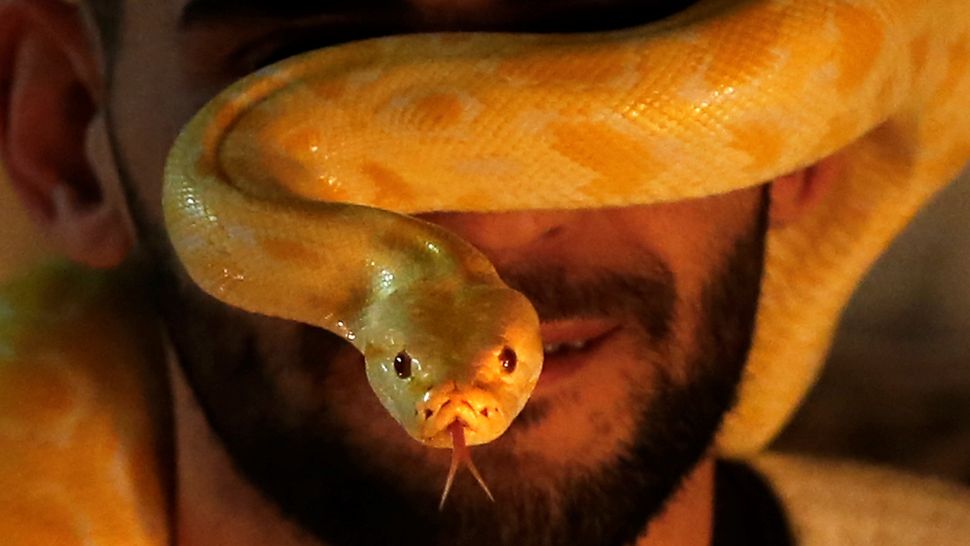
The Indian python (Python molurus), perhaps the serpent that sparked the imagination of generations with its portrayal as the charismatic Kaa in Rudyard Kipling’s “The Jungle Book,” transcends the bounds of fiction with its awe-inspiring dimensions. While the literary depiction may embellish its size, the reality of these majestic creatures is equally astounding. According to the Animal Diversity Web (ADW), Indian pythons can reach lengths of up to 20.9 feet (6.4 meters) and tip the scales at nearly 220 pounds (100 kilograms)—a weight comparable to that of a newborn elephant calf.
Endemic to the lush forests of India, Pakistan, Sri Lanka, and Nepal, Indian pythons share a close kinship with their Burmese counterparts. Like their Burmese brethren, Indian pythons possess specialized facial structures known as “heat pits,” equipped with a sensitive membrane capable of detecting infrared radiation emitted by warm-blooded prey up to 3.2 feet (1 meter) away, as elucidated in a 2010 study published in the journal Nature. This remarkable adaptation serves as a crucial tool in the arsenal of these stealthy nocturnal hunters, guiding them unerringly towards their unsuspecting quarry under the cloak of darkness.
As guardians of the forest realm, Indian pythons embody the timeless allure of the wilderness, their formidable presence a testament to the intricate tapestry of life that thrives within the verdant embrace of their native habitats. From the pages of literature to the depths of reality, the Indian python stands as an emblem of nature’s boundless wonders—a symbol of strength, resilience, and the eternal dance of predator and prey in the enigmatic realm of the jungle.
6. Reticulated python (32.8 feet)
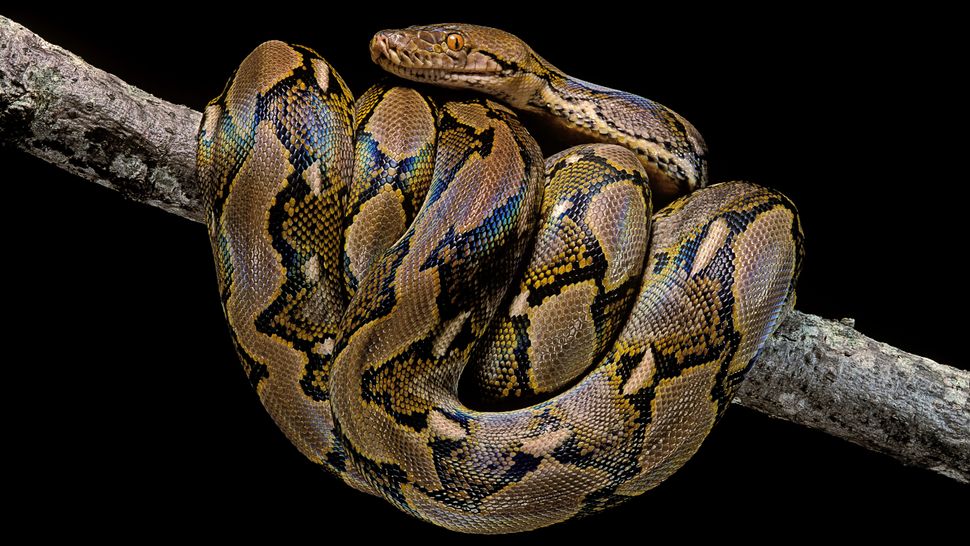
Hailing from the lush landscapes of South Asia, the reticulated python (Malayopython reticulatus) emerges as an icon of serpentine grandeur, adorned with a striking pattern of interlocking diamond shapes that lend it its distinctive name. Renowned as the longest snake species on Earth today, the reticulated python’s imposing stature has captured the imagination of enthusiasts and adventurers alike for centuries.
While historical accounts, such as one from 1912 claiming a captured python measuring a staggering 32.8 feet (10 meters)—equivalent to the length of a typical school bus—exist, verifying such figures presents a formidable challenge. Nonetheless, according to the esteemed U.K.’s Natural History Museum, reticulated pythons routinely exceed lengths of 20.5 feet (6.25 meters). The longest reticulated python ever documented in captivity, as recognized by Guinness World Records, measured an impressive 25.2 feet (7.7 meters), a testament to the awe-inspiring dimensions of these magnificent serpents.
Despite their formidable size, reticulated pythons are known for their temperamental nature, which, on rare occasions, has tragically resulted in fatal encounters with humans. In a harrowing incident in 2018, a woman in Indonesia was discovered, fully clothed, within the bloated belly of a python—an ominous reminder of the raw power wielded by these apex predators.
However, amidst their fearsome reputation, reticulated pythons also exhibit moments of tenderness and maternal care. Like their fellow python species, female reticulated pythons delicately encircle their clutch of eggs, employing rhythmic muscular contractions to generate heat—a nurturing gesture aimed at increasing the survival chances of their offspring against the chill of the environment, as observed by experts at the San Diego Zoo.
In the enigmatic realm of the reticulated python, contradictions abound—a creature both feared and revered, embodying the duality of nature’s beauty and brutality in equal measure.
5. Green anaconda (up to 33 feet)
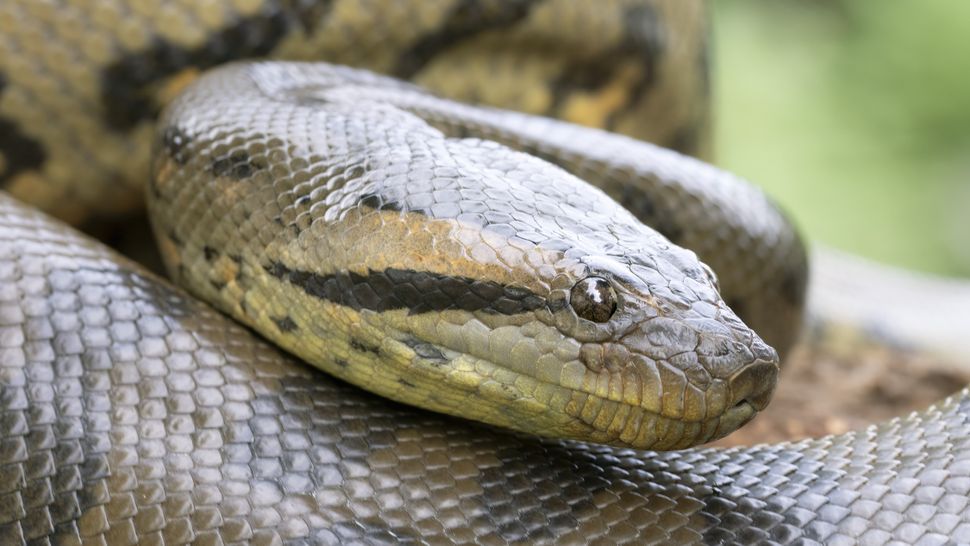
Green anacondas (Eunectes murinus) glide silently through the marshlands and winding streams of the Amazon, where they may grow to astounding lengths of up to 30 feet (9 meters) over their remarkably long lifespans.
While historical records suggest they may not rival the reticulated pythons in length, green anacondas reign supreme as the heaviest snake species alive today. According to the Smithsonian’s National Zoo and Conservation Biology Institute, these formidable serpents can tip the scales at an astonishing 550 pounds (250 kilograms)—equivalent to the weight of a baby grand piano. Harnessing their immense bulk, green anacondas utilize their powerful constriction to subdue a diverse array of prey, including capybaras, caimans, and even deer.
Despite the absence of an official record, tales of encounters with colossal green anacondas persist in the lore of the Amazon. In a remarkable incident from 2016, construction workers in Brazil stumbled upon a serpent estimated to measure a staggering 33 feet (10 meters) in length and weigh an incredible 880 pounds (399 kilograms).
Contrary to popular belief, the lethality of the green anaconda’s constriction does not solely rely on asphyxiation. As explained by Campbell, their sheer muscle mass enveloping their prey induces a cardiac arrest, effectively halting the rhythm and circulation of the heart. This immobilizes the prey, allowing the anaconda to leisurely consume it whole, typically starting with the head.
In the mysterious realm of the Amazon, the green anaconda stands as a formidable predator, its immense size and formidable strength embodying the untamed spirit of the rainforest.
4. Gigantophis garstini (up to 32 feet)
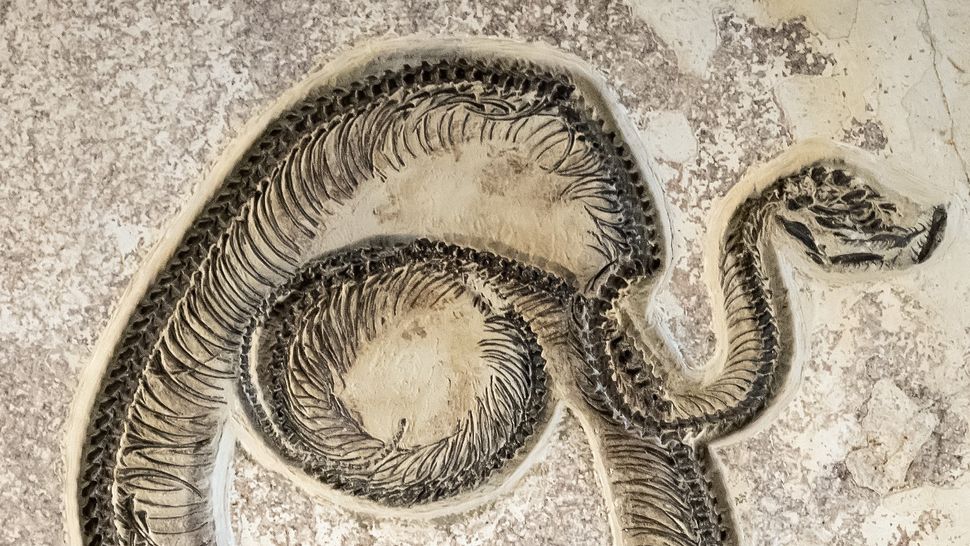
While contemporary snakes can achieve remarkable sizes, the annals of prehistory unveil a realm where serpents exceeded even the most formidable of their modern counterparts. Among these ancient behemoths looms Gigantophis garstini, a colossal serpent that prowled the Earth approximately 40 million years ago, as detailed in a PLOS blog post. Estimates place its formidable length between 23 and 32 feet (7 – 10 meters), dwarfing the dimensions of many present-day serpents.
Discovered in Egypt in 1901, Gigantophis garstini possessed a prodigious constrictive prowess, capable of ensnaring prey such as early elephant ancestors—creatures akin in size to modern tapirs—and consuming them whole. Intriguingly, researchers have identified a kinship between Gigantophis and another extinct giant serpent species known as Madtsoia, whose fossilized remains were unearthed in India. This connection suggests that the dominion of colossal snakes once extended across vast swathes of Asia, painting a vivid picture of a bygone era when these reptilian titans reigned supreme.
For close to a century following its discovery, Gigantophis garstini held sway as the undisputed champion of serpentine proportions, boasting the title of the world’s largest snake. However, the annals of paleontological discovery continue to unveil even larger specimens, perpetuating the mystique and fascination surrounding these ancient giants of the reptilian kingdom.
3. Palaeophis colossaeus (39 feet)
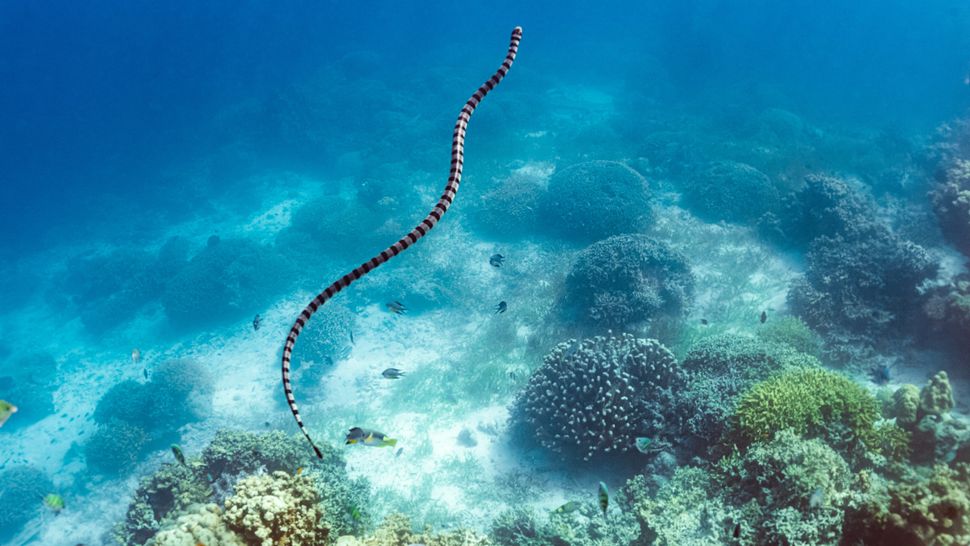
The expanses of Earth’s prehistoric seas were not devoid of colossal inhabitants; among them, the leviathans of the deep, such as Palaeophis colossaeus, held sway. This aquatic serpent navigated the ancient waters that once submerged parts of North Africa approximately 100 million years ago. When its fossilized remains were unearthed in the present-day Sahara desert, subsequent field expeditions in 1999 and 2003 provided researchers with samples that led to calculations revealing its staggering length of over 39 feet (12 meters), as detailed in research published in the journal Acta Palaeontologica Polonica. This designation elevates Palaeophis colossaeus to the illustrious title of the lengthiest sea snake ever discovered—and indeed, one of the longest snakes known to science.
While the head of this ancient sea serpent remains shrouded in mystery, its formidable size offers tantalizing insights into its predatory capabilities. From its reconstructed skeleton, researchers surmise that the mouth of Palaeophis colossaeus would have been expansive enough to engulf small whales whole—an astonishing feat befitting its colossal stature.
In a testament to the relentless march of evolution, the descendants of Palaeophis colossaeus pale in comparison to their ancient forebears. Modern-day sea snakes seldom exceed lengths of 6.5 feet (2 meters), a stark contrast to the awe-inspiring dimensions of their prehistoric predecessors. Yet, the legacy of these ancient leviathans endures, reminding us of the boundless wonders that once inhabited Earth’s primordial oceans.
2. Titanoboa cerrejonensis (42.7 feet)
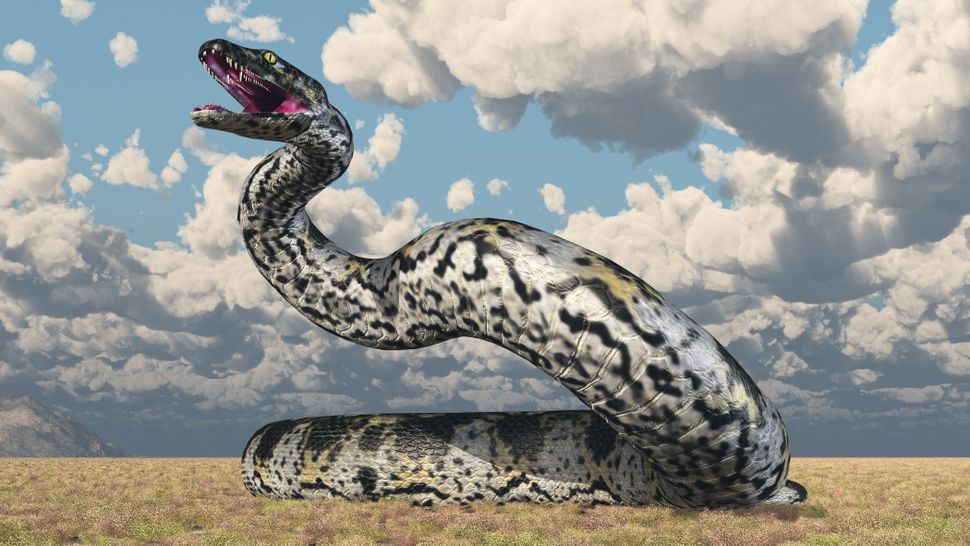
Titanoboa cerrejonensis, a snake that rivaled the iconic Tyrannosaurus rex in size and weight, emerges not from the realm of fiction but from the annals of Earth’s ancient history—a formidable predator that once prowled the humid forests and waterways of South America. Believed to be one of the largest snakes ever to have roamed the planet, Titanoboa stands as a testament to the astonishing diversity and magnitude of prehistoric life.
Dating back 60 million years, Titanoboa served as the primordial ancestor of the region’s modern-day anacondas and boas, its colossal frame stretching an astounding 42.7 feet (13 meters) in length. Its prodigious appetite was sated by a diet comprising crocodiles and river fish, a testament to the formidable hunting prowess of this ancient serpent. With an estimated weight of a staggering 1.25 tons (1.13 metric tons)—equivalent to the heft of a small car—Titanoboa commanded the apex of the food chain with unparalleled dominance, as revealed by researchers at Indiana University.
The fossilized remnants of Titanoboa were unearthed in the early 2000s, nestled within the sedimentary layers of the Cerrejón Formation—a geological marvel located in Colombia. Yet, despite the monumental significance of this discovery, the possibility of even larger serpentine titans lurking within the depths of Earth’s ancient landscapes cannot be discounted.
As Campbell aptly surmises, the door remains ajar for the revelation of yet another colossal serpent, one that may eclipse even the formidable stature of Titanoboa. The ongoing pursuit of paleontological discovery continues to unveil the mysteries of Earth’s distant past, offering tantalizing glimpses into the enigmatic world of prehistoric giants that once roamed the untamed wilderness of our planet.
1. Vasuki Indicus (up to 50 feet)

In April 2024, the reign of Titanoboa as the largest known snake was challenged by a formidable contender unearthed from the depths of an Indian mine: Vasuki indicus—a serpent of unparalleled proportions that, at its upper estimate, surpassed even the colossal dimensions of its predecessor by a staggering 6.5 feet (2 meters).
Named after Vasuki, the mythical king of serpents in Hinduism, this gargantuan reptile emerges as a titan of the prehistoric world, its fossilized vertebrae offering tantalizing insights into its colossal size. Estimates suggest that Vasuki indicus, in its prime, could have reached lengths ranging between 36 and 50 feet (11 and 15 meters), potentially eclipsing the dimensions of any known snake in history.
Vasuki’s existence traces back approximately 47 million years, placing it amidst the tumultuous epochs of Earth’s ancient past. Belonging to the extinct family of snakes known as Madtsoiidae, which first emerged during the late Cretaceous period, Vasuki indicus roamed the primordial landscapes of Africa, India, Australia, South America, and Southern Europe—a testament to the widespread distribution of these prehistoric serpents.
With its broad, cylindrical body and formidable presence, Vasuki indicus is believed to have been a formidable ambush predator, employing tactics reminiscent of modern-day constrictors such as boas and pythons. Armed with lethal constriction capabilities, this ancient behemoth likely subdued its prey with ruthless efficiency, securing its place atop the prehistoric food chain.
As the sands of time continue to yield the secrets of Earth’s distant past, Vasuki indicus stands as a towering testament to the grandeur and diversity of prehistoric life—a reminder of the awe-inspiring wonders that once roamed the untamed wilderness of our planet.
